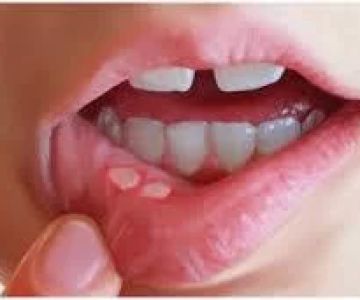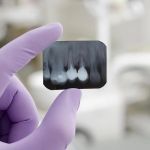Oral ulcers, commonly referred to as mouth sores, are a widespread health concern affecting millions of individuals across the United States. Characterized by painful lesions inside the mouth, these ulcers can cause significant discomfort and difficulty in everyday activities like eating, speaking, and brushing teeth. Understanding the symptoms of oral ulcers is crucial for early detection and effective management, reducing the risk of prolonged discomfort and complications.
What Are Oral Ulcers?
Oral ulcers are open sores that appear on the inner lining of the mouth. Unlike cold sores, which are usually found on the lips, oral ulcers can manifest on the tongue, gums, and inner cheeks. These lesions can vary in size and shape but are often painful, especially during consumption of food or beverages. The most common types are aphthous ulcers, which typically recur over time, causing repeated episodes of pain and discomfort.
The Core Symptoms of Oral Ulcers
The typical symptoms associated with oral ulcers are unmistakably uncomfortable. The initial sign is usually a burning or tingling sensation in the mouth, followed by the appearance of round or oval sores. These sores are often white or yellowish with a red halo and can prolong discomfort for one to two weeks. Besides localized pain, individuals might experience swelling and irritation in the surrounding areas of the mouth. In severe cases, ulcers can coincide with swollen lymph nodes, fever, or general malaise, necessitating more intensive medical management.
Causes and Risk Factors
The exact cause of oral ulcers remains ambiguous, yet several factors are known to contribute to their development. Stress, food allergies, oral trauma, and vitamin deficiencies (particularly iron, folic acid, or vitamin B12) are among the prevalent factors. In some cases, systemic health conditions such as celiac disease, inflammatory bowel diseases, and autoimmune disorders may increase the likelihood of developing oral ulcers. Identifying these triggers is essential for effective prevention and management strategies tailored to an individual's health needs.
Diagnosis and When to Seek Medical Advice
While most oral ulcers are benign and resolve without intervention, persistent or unusually large sores may require medical evaluation. A healthcare provider can perform a physical examination, review medical history, and, if necessary, conduct laboratory tests to rule out underlying conditions. Early intervention can help manage symptoms more effectively and prevent complications. If ulcers persist for more than two weeks or if they are accompanied by severe pain or systemic symptoms, seeking professional medical advice is strongly advised.
Effective Management and Treatment Strategies
Dentistry Toothtruth offers comprehensive resources and guidance for individuals experiencing oral ulcers. Treatment typically focuses on reducing pain and promoting healing. Over-the-counter topical treatments, like antiseptic mouthwashes or protective pastes, can offer symptomatic relief. For recurring ulcers, healthcare providers might prescribe corticosteroids or other medications. Proper oral hygiene, a balanced diet, and stress management are also pivotal in reducing ulcer occurrence and promoting oral health.
Conclusion and Action Steps
Having a clear understanding of the typical symptoms and management options for oral ulcers enables individuals to address this common health issue proactively. Regular consultation with dental professionals, like those at Dentistry Toothtruth, ensures you receive personalized care tailored to your needs. Remember, maintaining good oral hygiene and paying attention to dietary and lifestyle habits can significantly decrease the frequency and severity of oral ulcers. Always be attentive to your body's signals, and seek professional advice whenever persistent vulnerabilities in your health arise.




 Valleywise Community Health Center - Mesa3.0 (252 review)
Valleywise Community Health Center - Mesa3.0 (252 review) All Smile Dental Center3.0 (31 review)
All Smile Dental Center3.0 (31 review) Vaksman Dental Group4.0 (309 review)
Vaksman Dental Group4.0 (309 review) Advanced Dental Implant Center "Comfort Dental"4.0 (201 review)
Advanced Dental Implant Center "Comfort Dental"4.0 (201 review) Oasis Dentistry4.0 (78 review)
Oasis Dentistry4.0 (78 review) Steven J. Moravec, DDS, MS4.0 (189 review)
Steven J. Moravec, DDS, MS4.0 (189 review) The Importance of Oral Health Education During Pregnancy for a Healthy Pregnancy
The Importance of Oral Health Education During Pregnancy for a Healthy Pregnancy Best Tips for Brushing Your Teeth Properly for Healthy Gums: Essential Techniques for Oral Health
Best Tips for Brushing Your Teeth Properly for Healthy Gums: Essential Techniques for Oral Health Why Skipping Dental Checkups Can Lead to Bigger Oral Health Problems
Why Skipping Dental Checkups Can Lead to Bigger Oral Health Problems Advantages of Porcelain Dental Restorations
Advantages of Porcelain Dental Restorations How Can Diabetes Cause Tooth and Gum Problems? Preventing and Managing Oral Health Issues
How Can Diabetes Cause Tooth and Gum Problems? Preventing and Managing Oral Health Issues Healthy Habits for Promoting Good Oral Health and Hygiene: Tips for a Healthy Smile
Healthy Habits for Promoting Good Oral Health and Hygiene: Tips for a Healthy Smile